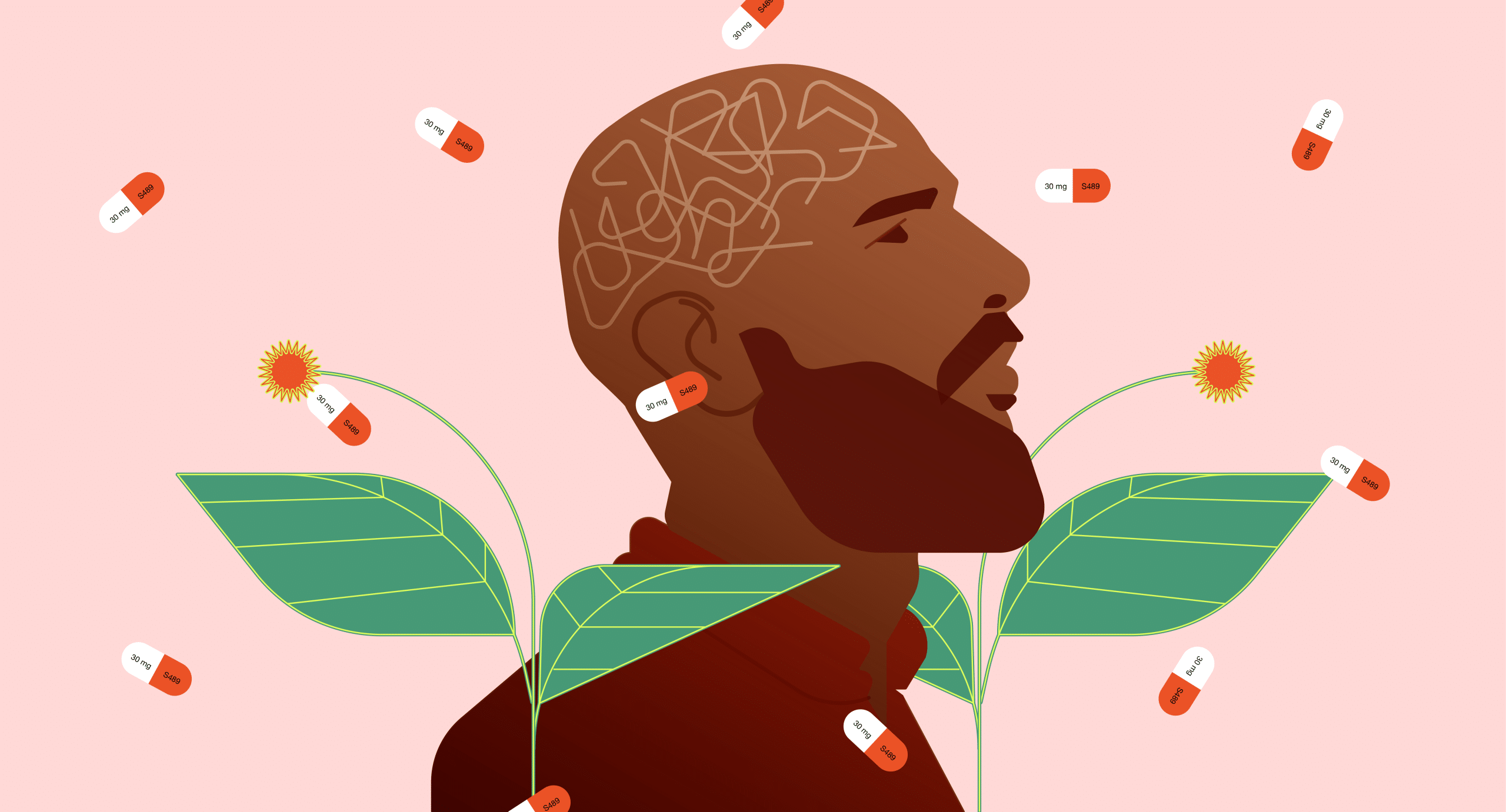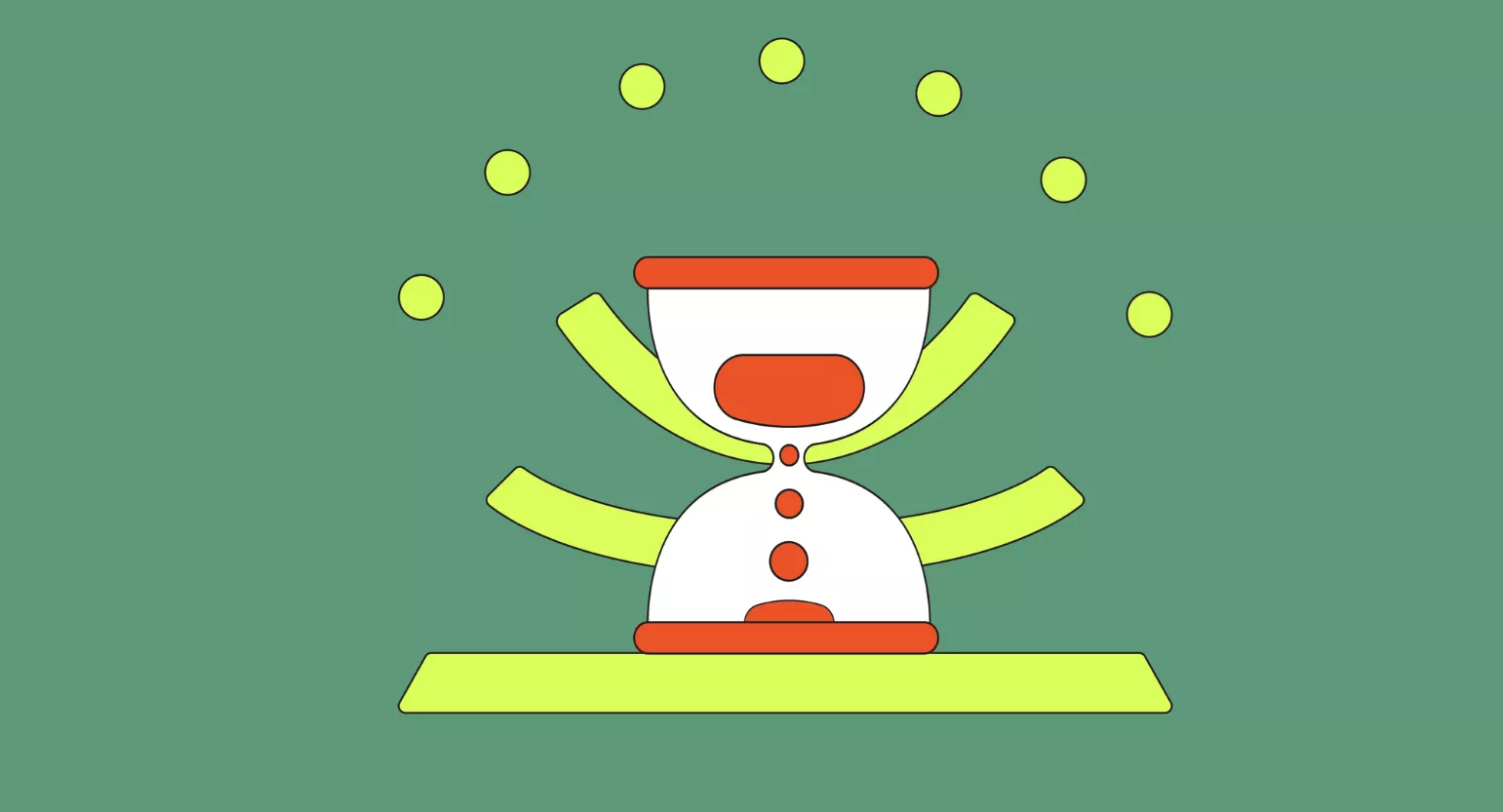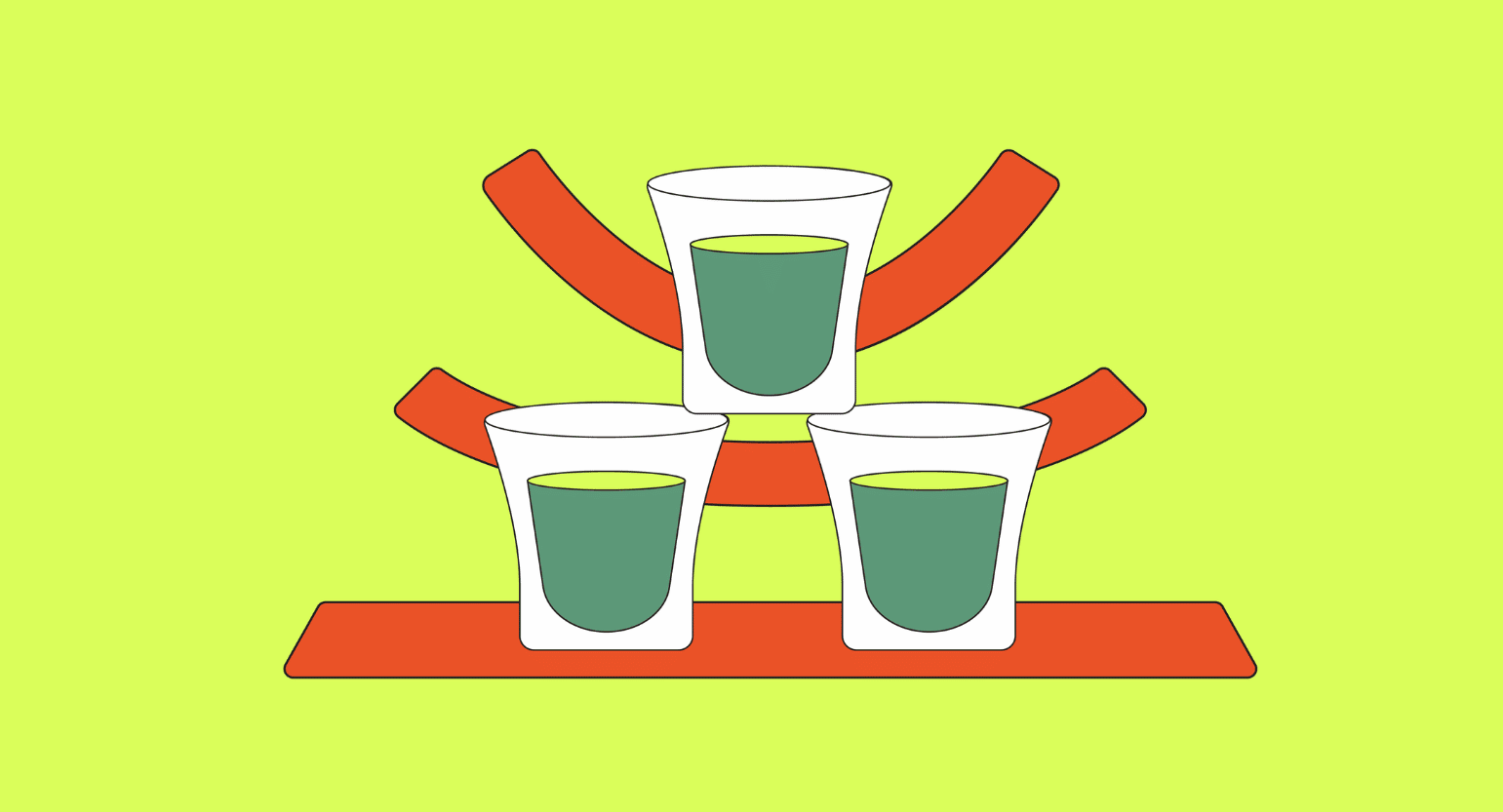| 🍃 Kratom | 💊 Vyvanse | |
| Availability | Prescription-Only | Unrestricted |
| Natural or Synthetic? | Natural | Synthetic |
| Active Ingredient | Mitragynine, 7-hydroxy-mitragynine, & other plant-derived alkaloids | D-Amphetamine |
| Indications | Boost energy & focus, chronic pain, opiate withdrawal, anxiety, & sleep | ADHD & BED |
| Dosage | 2-12 grams per day | 30-70 mg per day |
| Common Side Effects | Nausea, vomiting, lethargy, dizziness, anxiety, brain fog, constipation | Dry mouth, insomnia, abdominal pain, suppressed growth, decreased weight, irritability, plus others |
| Level of Risk | High | Low-Moderate |
| Risk of Addiction | Moderate | High |
| Cost | $10 – $20 an ounce (~30 grams) | $350-$450 for thirty 40 mg capsules |
What is Vyvanse?
Approximately 4% of the adults and 9% of the kids in the US have ADHD [1].
Males are three times more likely to be diagnosed than females, and the first symptoms typically appear between 3 and 6 years old.
Inattention, impulsivity, and hyperactivity are key indicators of the disorder.
Individuals with ADHD often have trouble focusing, concentrating, staying organized, remembering specific tasks, and sitting still.
Vyvanse is a prodrug or an inactive compound converted to a drug once the body metabolizes it. It acts as a central nervous system stimulant, affecting chemicals in the brain and nerves that contribute to impulse and hyperactivity control and management. The FDA approved the drug to treat attention deficit hyperactivity disorder, or ADHD, in adults and children six years or older.
This prescription is also effective as a treatment for moderate to severe binge-eating disorders in adults.
Users feel more energized, focused, and alert while taking this prescription. However, some people take large doses to achieve intense feelings of euphoria.
What is Kratom?
Kratom is an all-natural herb derived from the Mitragyna speciosa tree. It’s related to coffee and is native to Southeast Asia.
Kratom has been used for many years to manage a variety of different physical and mental problems.
Kratom leaves are dried and turned into a powder that possesses potent benefits, some of which align well with battling ADHD symptoms.
The herb is bitter and earthy in flavor, so some individuals prefer to take kratom in capsule form.
The alkaloids found in kratom are responsible for providing the following benefits [2]:
- An energy boost
- Improved focus and concentration
- Motivation
- Physical relaxation
- Mental clarity
- Pain relief
- Euphoria
The right strain of kratom can provide benefits similar to those of Vyvanse, like increased concentration, focus, alertness, enhanced mood, improved cognitive function, and decreased feelings of fatigue or exhaustion.
Some strains prove to be better pain-relievers and sedatives, such as red vein varieties, while others, such as white vein varieties, are more efficient stimulants.
Due to these effects that closely mimic those of Vyvanse, it’s clear why some people with ADHD have considered trying kratom as a natural alternative to managing their symptoms.
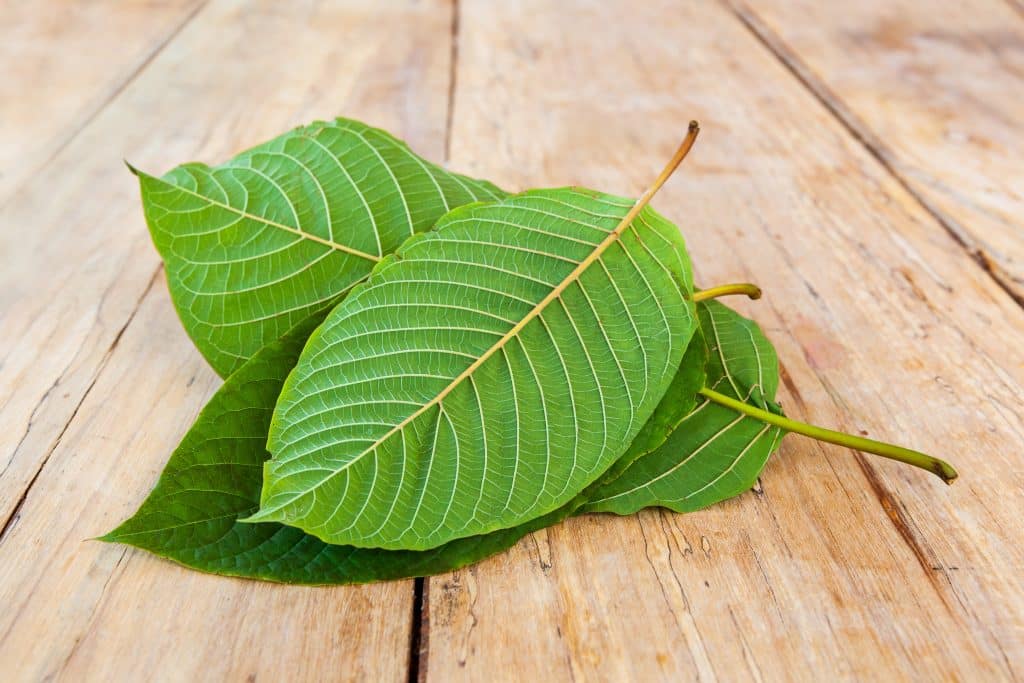
What are the Differences and Similarities Between Kratom and Vyvanse?
Both substances are stimulants and cause euphoria, focus, concentration, calmness, increased energy, and motivation.
However, kratom is a natural herb, while Vyvanse is a prescription medication with many chemicals making up its composition. Both have the potential for addiction if abused.
Kratom is typically not a federally controlled substance; Vyvanse is. There are no repercussions unless you live in a state or area where kratom is banned or controlled.
In many states, kratom is legal and available online or in most head shops without prescription. It’s much more easily obtainable than a prescription for Vyvanse. Using a medication not prescribed to you personally can result in legal ramifications.
1. Side Effects: Vyvanse vs. Kratom
The side effects — often serious ones — associated with prescription drugs has many people looking for a better way to manage their health. Here’s how Vyvanse compares to kratom.
Side effects of Vyvanse
Because Vyvanse is a prodrug, the side effects are less common than with similar drugs like Adderall.
However, there is still an excessive amount of side effects associated with taking Vyvanse, so it’s no wonder why kratom has caught the attention of those with ADHD.
The most common side effects include:
- Nausea
- Vomiting
- Constipation
- Abdominal pain
- Loss of appetite
- Dry mouth
- Headache
- Anxiousness or nervousness
- Dizziness
- Trouble sleeping (insomnia)
- Sweating
- Weight loss
- Irritability
- Restlessness
- Numbness or tingling sensation in extremities
Though rare, there are serious side effects associated with Vyvanse.
More severe side effects include:
- Sudden death in patients with underlying heart problems
- Hallucinations
- Psychosis
- Mania
- Growth suppression
- Serotonin Syndrome
- Peripheral vasculopathy
- High blood pressure
If you experience any of the following reactions while taking Vyvanse, you should contact your doctor right away:
- Blurred vision
- Irregular or rapid heartbeat
- Mood or behavior changes (agitation, aggression, hallucinations, suicidal thoughts, etc.)
- Uncontrolled movements
- Muscles spasms
- Unusual feelings in fingers or toes
- Outbursts of words or sounds
- Changes in sexual ability or interest
- Swelling in the ankles or feet
- Extreme fatigue
- Rapid or unexplained weight loss
- Frequent or prolonged erections
Sometimes blood circulation problems will occur, which cause numbness, pain, or even discoloration in your fingers or toes.
Vyvanse has the potential to be habit-forming. Before taking Vyvanse, you should always consult your doctor if you have had problems in the past with drug or alcohol abuse.
While Vyvanse can effectively treat ADHD, it’s sometimes known to cause or worsen psychosis. It may cause unusual thoughts or behavior, especially if you have any history of depression, mental illness, or bipolar disorder.
Side Effects of Kratom
While it’s natural, kratom is not without side effects.
Some of the negative side effects associated with kratom include:
- Stomach pain
- Nausea
- Vomiting
- Dry mouth
- Nervousness
- Anxiety
- Aggressive behavior
- Irritation
- Difficulty falling or staying asleep
- Blurred vision
- Tremors
- Headache
- Rapid heartbeat
These side effects are most common in users who have taken too much of the herb or are new to taking it altogether. You can avoid most of these side effects if you’re careful with your initial dose; start on the low end, and then work your way up if necessary.
There’s little research on kratom, especially long-term effects; however, a few are possibly related to regular kratom use.
Possible long-term effects include:
- Dependency
- Addiction
- Liver damage
- Kidney damage
Kratom can be addictive, though not to the degree other opioids are. It rarely causes a problem when used correctly.
2. Dosage & Cost: Vyvanse vs. Kratom
Prescription medications are often expensive, and Vyvanse is no exception. As for now, there isn’t a generic version, making it even more cost-prohibitive. It can be a significant setback at approximately $12 for a 70 mg pill (the maximum dose).
Kratom costs about 50 cents a gram. The average dose is between 2-6 grams, making it cost up to $3 a day — a vast difference and another one of the many reasons people are making the switch.
Vyvanse Dosage
There’s no guesswork involved in how much to take, at least not on your part. Doctors take into account the patient’s previous medical history, including heart problems, substance abuse, and mental disorders, along with the severity of the ADHD. It might take some adjusting before the dose is correct, but Vyvanse is a controlled substance. It’s essential to follow the doctor’s instructions.
Kratom Dosage
Finding the correct dose for kratom can be tricky. Because of the various strains and their different effects, it’s important to research strains and doses.
White strains are the most stimulating and recommended for increased focus and energy. Green strains are less stimulating but can still be a good choice.
If you’re wondering how much to take, start small. The average dose is between 2-6 grams, but it’s essential to pay attention to any reactions because strains react differently for each person.
Related: Can You Overdose on Kratom?
3. Improving Focus & Treating ADHD: Vyvanse vs. Kratom
Both Vyvanse and kratom are helpful in mitigating symptoms of ADHD. However, they work in different ways. Vyvanse is a prescription medication, a stimulant amphetamine, that works by raising levels of dopamine and norepinephrine in your brain.
These chemicals help you focus, control impulses, and pay attention at work or school. Vyvanse is a much stronger stimulant when compared directly to kratom.
Kratom is a natural herb derived from the Mitragya speciosa tree, which is in the coffee family. Kratom is dose-dependent, meaning it can be very stimulating in smaller doses, or very sedating in larger doses.
For severe ADHD, prescription medication is probably necessary. If you have mild to moderate ADHD, kratom may have the potential to help.
4. For Eating Disorders: Vyvanse vs. Kratom
Kratom is an alkaloid-rich herb known for possessing properties that may be helpful in shedding excess weight. However, kratom is not considered a “weight-loss” supplement.
It helps users lose weight and refrain from overeating due to indirect effects, including stimulation and increased energy along with appetite suppression.
Vyvanse can kill your appetite and is helpful with individuals who are overweight or who binge eat.
If you struggle with severe binge eating, medications will probably work best for you. If you just have a big appetite and tend to snack too much, kratom may be able to prevent excess weight gain.
5. Origins and Active Ingredients: Vyvanse vs. Kratom
Kratom is a natural herb that’s been used medicinally for centuries. The leaves of the kratom tree are harvested, dried, and powdered. The powder can then be taken with water, brewed into tea, or placed into capsules and ingested.
The powder contains a variety of active ingredients, or alkaloids, which are what give it medicinal benefits. Kratom powder is typically rich in alkaloids, but two — mitragynine and 7-hydroxymitragynine — are responsible for most of the effects. Opioid receptors are the primary target, which makes sense due to kratom’s opioid-like effects.
Vyvanse is a synthetic medication and contains one main active ingredient that’s responsible for its effectiveness — lisdexamfetamine dimesylate. This agent works primarily by encouraging the release of the neurotransmitters dopamine and norepinephrine from their storage areas.
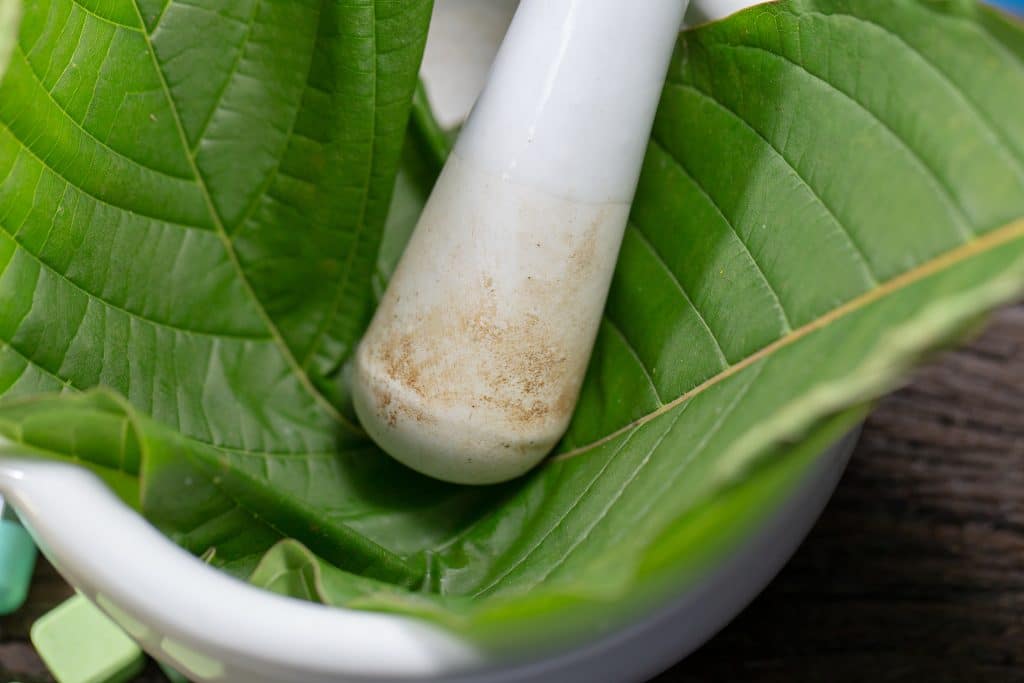
Should Kratom be Used as a Substitute for Vyvanse?
The answer to this question, in short, is no.
If your doctor prescribes Vyvanse, they believe the benefits to your mental health outweigh the risks.
Kratom should not be considered a replacement or substitute for Vyvanse medication, and taking them together should be done with extreme caution — and only after speaking to your doctor.
If you currently take Vyvanse and want to introduce kratom into your daily routine or see how taking them together works for you, you should speak to your doctor before beginning. Only they can give you the best advice possible when it comes to combining your medication with kratom.
- Danielson, M. L., Bitsko, R. H., Ghandour, R. M., Holbrook, J. R., Kogan, M. D., & Blumberg, S. J. (2018). Prevalence of parent-reported ADHD diagnosis and associated treatment among US children and adolescents, 2016. Journal of Clinical Child & Adolescent Psychology, 47(2), 199-212.
- Ellis, C. R., Racz, R., Kruhlak, N. L., Kim, M. T., Zakharov, A. V., Southall, N., … & Stavitskaya, L. (2020). Evaluating kratom alkaloids using PHASE. PloS one, 15(3), e0229646.

